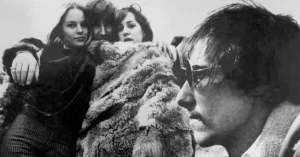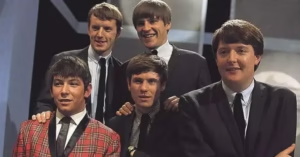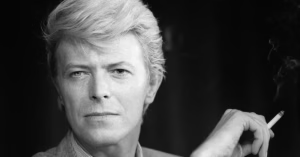Steely Dan: The Studio Alchemists of Jazz-Rock Cool
Steely Dan. Formation and Background
Steely Dan was formed in 1972 by:
- Donald Fagen – Vocals, keyboards, songwriting
- Walter Becker – Bass, guitar, songwriting
The two met in 1967 at Bard College in New York, bonding over a love for jazz, literature, and sardonic humor. After a brief stint writing songs for others (including Barbra Streisand), they formed Steely Dan, named after a fictional object from William S. Burroughs’ novel Naked Lunch.
While they began as a conventional rock band with a full lineup, they would soon become a studio-based project, built on perfectionism, world-class session musicians, and their unique fusion of styles.
Steely Dan. Early Albums: Rock Foundations and Growing Complexity (1972–1974)
✦ Can’t Buy a Thrill (1972)
- Their debut was a surprise hit, balancing pop-rock accessibility with jazz sophistication.
- Hits:
- “Do It Again” – Latin-tinged groove, cryptic lyrics
- “Reelin’ In the Years” – One of the greatest guitar solos in rock
- “Dirty Work” – Sung by David Palmer, a one-time vocalist
✦ Countdown to Ecstasy (1973)
- More complex and jazz-inflected, featuring:
- “Bodhisattva” – A bebop-meets-rock barnburner
- “My Old School” – A humorous jab at Bard College
The band toured reluctantly and soon abandoned the idea of being a live act.
✦ Pretzel Logic (1974)
- Incorporated even more jazz, with shorter, tighter songs
- “Rikki Don’t Lose That Number” – Their biggest Billboard hit
- Used top-tier session musicians, setting a new standard in pop-rock production
Steely Dan. Studio Perfectionism and Artistic Peak (1975–1980)
By this point, Steely Dan had become just Becker and Fagen, with a revolving cast of elite players: Larry Carlton, Jeff Porcaro, Bernard Purdie, Michael McDonald, Steve Gadd, and many more.
✦ Katy Lied (1975)
- Technical and lyrical experimentation
- “Black Friday,” “Doctor Wu,” “Bad Sneakers” – cynical and jazzy, with immaculate arrangements
✦ The Royal Scam (1976)
- Their darkest and funkiest album
- “Kid Charlemagne” – A cult favorite, inspired by a drug chemist
- “The Fez,” “Haitian Divorce”
✦ Aja (1977)
- Their masterpiece, blending jazz-rock, soul, and abstract lyrics with flawless production
- Grammy winner and critical smash
- Key tracks:
- “Peg” – Bright pop with complex harmonies
- “Deacon Blues” – The outsider’s anthem
- “Josie,” “Black Cow,” the title track “Aja” – A jazz fusion tour de force
Aja is considered one of the greatest albums of all time, often cited by audiophiles and musicians alike for its studio perfection.
✦ Gaucho (1980)
- Took years to make due to studio tension, perfectionism, and personal issues
- Songs like “Babylon Sisters,” “Hey Nineteen,” “Time Out of Mind”
- Smooth, cynical, and laced with satire about aging hipsters and broken dreams
Despite massive success, the strain proved too much. After Gaucho, Steely Dan broke up in 1981, and both pursued solo projects.
Steely Dan. Hiatus and Solo Work (1981–1993)
Donald Fagen released the acclaimed The Nightfly (1982), a personal, nostalgic album about 1950s idealism and Cold War anxiety.
Walter Becker produced albums for others (including China Crisis and Rickie Lee Jones), living reclusively in Hawaii for much of the ’80s.
Steely Dan’s music gained cult status, revered by jazz musicians, rock critics, and crate-diggers alike.
Steely Dan. Reunion and Late Career (1993–2017)
✦ Reunion Tours (1993)
Becker and Fagen returned to touring, backed by an elite ensemble. Fans were stunned — after 20 years, Steely Dan was a live band again.
✦ Two Against Nature (2000)
- Their first studio album in 20 years, rich with R&B grooves and lyrical puzzles
- Won 4 Grammy Awards, including Album of the Year
- Songs: “Cousin Dupree,” “Gaslighting Abbie”
✦ Everything Must Go (2003)
- Their final studio album
- Looser, bluesier, and more jam-oriented
- Fagen and Becker played most instruments themselves
Though not as iconic as their ’70s work, these albums proved Steely Dan could evolve without losing their identity.
Death of Walter Becker and Legacy (2017–Present)
Walter Becker died on September 3, 2017, at age 67. Fagen continues to tour under the Steely Dan name, honoring their partnership and songs.
Today, Steely Dan remains:
- A staple of classic rock and jazz rock radio
- A favorite among musicians and audiophiles
- A symbol of studio perfection, musical intelligence, and lyrical irony
Musical Style and Themes
Steely Dan’s music combines:
- Jazz harmony and improvisation
- Rock structures and rhythms
- Pop melodies and funk grooves
- Cryptic, literary lyrics filled with satire, noir characters, and New York slang
Themes include:
- Urban ennui, addiction, nostalgia, sex, failure, faded glamour, intellectual alienation
- Their lyrics are dense, ironic, and often open to interpretation
Legacy and Influence
Steely Dan’s fingerprints can be found in:
- Jam bands and jazz-fusion acts (Snarky Puppy, Vulfpeck)
- Pop and indie artists (St. Vincent, Father John Misty, John Mayer)
- Producers and perfectionists (Tame Impala, Daft Punk)
Accolades:
- Rock and Roll Hall of Fame inductees (2001)
- Multiple Grammy Awards
- Aja and Gaucho considered landmarks in music production
Interesting Facts
- Known for hiring the best session musicians in the world, often recording 50+ takes per song
- “Peg” features Michael McDonald’s unforgettable layered backing vocals
- Their lyrics are so obscure that fans have created entire websites just to decode them
- Steely Dan songs have been sampled by Kanye West, De La Soul, and others
- Fagen once described their process as “like writing a novel with a really good band”





